This article needs additional citations for verification .(September 2016) |

Titan is a novel by the German writer Jean Paul, published in four volumes between 1800 and 1803. It was translated into English by Charles Timothy Brooks in 1862.
Contents

This article needs additional citations for verification .(September 2016) |

Titan is a novel by the German writer Jean Paul, published in four volumes between 1800 and 1803. It was translated into English by Charles Timothy Brooks in 1862.

Divided not into chapters but into "jubilees" and "cycles", [1] Titan comprises some 900 pages and tells the story of the education of the hero Albano de Cesara, his transformation from a passionate youth into the mature man who ascends the throne of the small principality of Pestitz.
Jean Paul called Titan his "cardinal and capital" novel. In language and style the novel differs strikingly from other texts by the writer. The narrative, despite its sentimental and effusive manner, and rich descriptions, is tightly organized and contains fewer digressions and side notes. This is often seen as a temporary approach to the classicism of Weimar, which Jean Paul at this time was subjecting to an intensive and critical examination. The rich imagery and comic misdirections are still present, and the novel remains challenging for today's readers.
Jean Paul considered using the title Anti-Titan in order to express more clearly the idea of hubris, of the inevitable doom of the Himmelsstürmer ("Heaven-stormers") of Romanticism. His aim was also to condemn "the indiscipline of the Saeculum" and the separation of the self from contemplation. In the characters of the novel (Roquairol, Schoppe, Gaspard, Liane, Linda) Jean Paul crystallizes various European controversies of the year 1800. In the end, all characters but the hero come to grief as a result of their one-sidedness. With Schoppe, the idealistic philosophy of Fichte is criticised; in Roquairol the aesthete and l'art pour l'art (Jean Paul's conception of the Weimar ideal); Gaspard encapsulates cold political calculation; Liane, a fanatical religiosity (pietism, the Moravian Church); in Linda the purportedly unseemly hubris of emancipated women. The contemplation of these examples teaches the hero to be harmonious, a mature concord of strengths rather than an individual of one concentrated power. It has been frequently commented, however, that the doomed characters are perhaps more interesting than the sometimes too smooth and perfect-seeming main character Albano.
Gustav Mahler composed a 'tone poem' titled after this novel, [2] although in the process of revising the work he dropped the name and the 2nd movement, and the work was transformed into Mahler's First Symphony, with the composer afterwards discouraging any attempt to seek connections.
Erich Heckel was inspired by the figure of Roquairol while painting a portrait of his friend Ernst Ludwig Kirchner.

Pierrot is a stock character of pantomime and commedia dell'arte, whose origins are in the late seventeenth-century Italian troupe of players performing in Paris and known as the Comédie-Italienne. The name is a diminutive of Pierre (Peter), via the suffix -ot. His character in contemporary popular culture — in poetry, fiction, and the visual arts, as well as works for the stage, screen, and concert hall — is that of the sad clown, often pining for love of Columbine, who usually breaks his heart and leaves him for Harlequin. Performing unmasked, with a whitened face, he wears a loose white blouse with large buttons and wide white pantaloons. Sometimes he appears with a frilled collaret and a hat, usually with a close-fitting crown and wide round brim and, more rarely, with a conical shape like a dunce's cap.

Gaspard Monge, Comte de Péluse was a French mathematician, commonly presented as the inventor of descriptive geometry, technical drawing, and the father of differential geometry. During the French Revolution he served as the Minister of the Marine, and was involved in the reform of the French educational system, helping to found the École Polytechnique.

Gaspard-Félix Tournachon, known by the pseudonym Nadar, was a French photographer, caricaturist, journalist, novelist, balloonist, and proponent of heavier-than-air flight. In 1858, he became the first person to take aerial photographs.
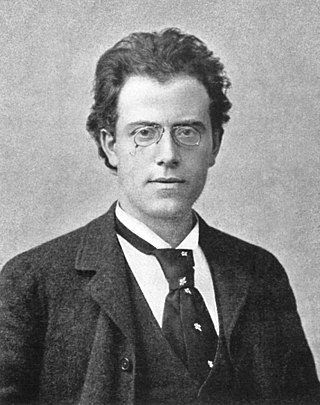
The Symphony No. 1 in D major by Gustav Mahler was mainly composed between late 1887 and March 1888, though it incorporates music Mahler had composed for previous works. It was composed while Mahler was second conductor at the Leipzig Opera in Germany. Although in his letters Mahler almost always referred to the work as a symphony, the first two performances described it as a symphonic poem and as a tone poem in symphonic form, respectively. The work was premièred at the Vigadó Concert Hall in Budapest, Hungary, in 1889, but was not well-received. Mahler made some major revisions for the second performance, given at Hamburg, Germany, in October 1893; further alterations were made in the years prior to the first publication, in late 1898. Some modern performances and recordings give the work the title Titan, despite the fact that Mahler only used this label for the second and third performances, and never after the work had reached its definitive four-movement form in 1896.

Doom Patrol is a superhero team from DC Comics. The original Doom Patrol first appeared in My Greatest Adventure #80, and was created by writers Arnold Drake and Bob Haney, along with artist Bruno Premiani. Doom Patrol has appeared in different incarnations in multiple comics, and have been adapted to other media. The series' creator and fans have suspected that Marvel Comics copied the basic concept to create the X-Men, which debuted a few months later.
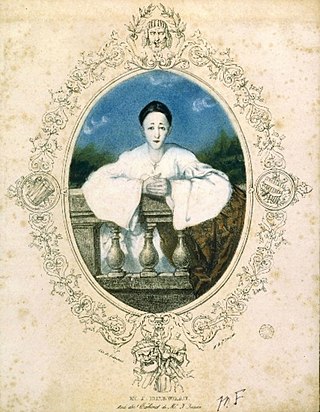
Jean-Gaspard Deburau, sometimes erroneously called Debureau, was a Bohemian-French mime. He performed from 1816 to the year of his death at the Théâtre des Funambules, which was immortalized in Marcel Carné's poetic-realist film Children of Paradise (1945); Deburau appears in the film as a major character. His most famous pantomimic creation was Pierrot—a character that served as the godfather of all the Pierrots of Romantic, Decadent, Symbolist, and early Modernist theater and art.

Wallace Rudolph "Wally" West is a superhero appearing in American comic books published by DC Comics as the original Kid Flash and the third Flash. His power consists mainly of superhuman speed. The nephew of Iris West, he first appeared in Flash #110 (1959), which depicted his transformation into Kid Flash. Under the mantle of Kid Flash, Wally was depicted as a teenage sidekick to his uncle-by-marriage, Barry Allen, and a founding member of the Teen Titans. After Barry's death in Crisis on Infinite Earths in 1985, Wally took on the role of the Flash from 1986 to 2009 in DC's main lineup until Barry returned in The Flash: Rebirth. He would later return as the main Flash since 2021, as part of the Infinite Frontier relaunch.

Jean Paul was a German Romantic writer, best known for his humorous novels and stories.
A Faust Symphony in three character pictures, S.108, or simply the "Faust Symphony", is a choral symphony written by Hungarian composer Franz Liszt inspired by Johann Wolfgang von Goethe's drama, Faust. The symphony was premiered in Weimar on 5 September 1857, for the inauguration of the Goethe–Schiller Monument there.

Le Magnifique is a French/Italian international co-production released in 1973, starring Jean-Paul Belmondo, Jacqueline Bisset and Vittorio Caprioli that was directed by Philippe de Broca. Le Magnifique is a slapstick spoof of B-series espionage films and novels and the men who write them.

The Berlin Stories is a 1945 omnibus by Anglo-American writer Christopher Isherwood and consisting of the novels Mr Norris Changes Trains (1935) and Goodbye to Berlin (1939). The two novels are set in Jazz Age Berlin between 1930 and 1933 on the cusp of Adolf Hitler's ascent to power. Berlin is portrayed by Isherwood during this chaotic interwar period as a carnival of debauchery and despair inhabited by desperate people who are unaware of the national catastrophe that awaits them.
Ernesto Colón Sierra was a stateside Puerto Rican comics artist, known for his wide-ranging career illustrating children's, superhero, and horror comics, as well as mainstream nonfiction.

Joshua Clay (Tempest) is a fictional character, a member of the superhero team Doom Patrol in comic books published by DC Comics. Created by Paul Kupperberg and Joe Staton, he first appears as the hero Tempest in Showcase #94 (August 1977).
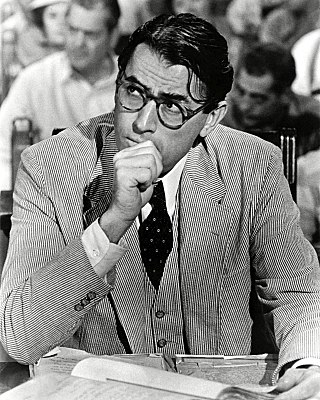
Atticus Finch is a fictional character and the protagonist of Harper Lee's Pulitzer-Prize-winning novel of 1960, To Kill a Mockingbird. A preliminary version of the character also appears in the novel Go Set a Watchman, written in the mid-1950s but not published until 2015. Atticus is a lawyer and resident of the fictional Maycomb County, Alabama, and the father of Jeremy "Jem" Finch and Jean Louise "Scout" Finch. He represents the African-American man Tom Robinson in his trial where he is charged with rape of Mayella Ewell. Lee based the character on her own father, Amasa Coleman Lee, an Alabama lawyer, who, like Atticus, represented black defendants in a highly publicized criminal trial. Book magazine's list of The 100 Best Characters in Fiction Since 1900 names Finch as the seventh best fictional character of 20th-century literature. In 2003, the American Film Institute voted Atticus Finch, as portrayed in an Academy Award-winning performance by Gregory Peck in the 1962 film adaptation, as the greatest hero of all American cinema. In the 2018 Broadway stage play adapted by Aaron Sorkin, Finch has been portrayed by various actors including Jeff Daniels, Ed Harris, Greg Kinnear, Rhys Ifans, and Richard Thomas.

The sociology of literature is a subfield of the sociology of culture. It studies the social production of literature and its social implications. A notable example is Pierre Bourdieu's 1992 Les Règles de L'Art: Genèse et Structure du Champ Littéraire, translated by Susan Emanuel as Rules of Art: Genesis and Structure of the Literary Field (1996).
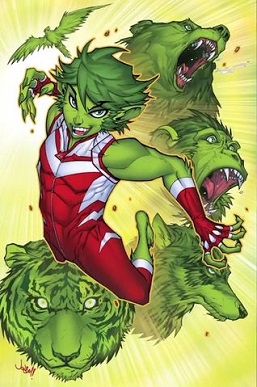
Beast Boy is a superhero appearing in American comic books published by DC Comics. He has also gone under the alias Changeling. Created by writer Arnold Drake and artist Bob Brown, he is a shapeshifter who possesses the ability to metamorph into any animal he chooses. The character first appeared in Doom Patrol #99 and is usually depicted as a member of the Doom Patrol and the Teen Titans.

Jason Starr is an American filmmaker, television producer and director based in New York City.
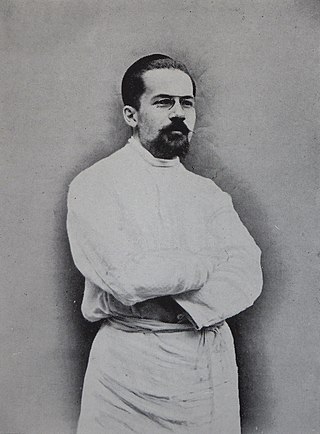
Paul Joseph Edmond Carton was a French physician, naturopath and practitioner of vegetarianism.

Journey Through the Impossible is an 1882 fantasy play written by Jules Verne, with the collaboration of Adolphe d'Ennery. A stage spectacular in the féerie tradition, the play follows the adventures of a young man who, with the help of a magic potion and a varied assortment of friends and advisers, makes impossible voyages to the center of the Earth, the bottom of the sea, and a distant planet. The play is deeply influenced by Verne's own Voyages Extraordinaires series and includes characters and themes from some of his most famous novels, including Twenty Thousand Leagues Under the Sea, Journey to the Center of the Earth, and From the Earth to the Moon.

Louis-François Jauffret was an 18th–19th-century French educator, poet and fabulist. Gaspard-André Jauffret, bishop of Metz, Jean-Baptiste Jauffret, director of the imperial institution of the deaf in St. Petersburg and Joseph Jauffret, master of requests to the Conseil d'État, were his brothers.